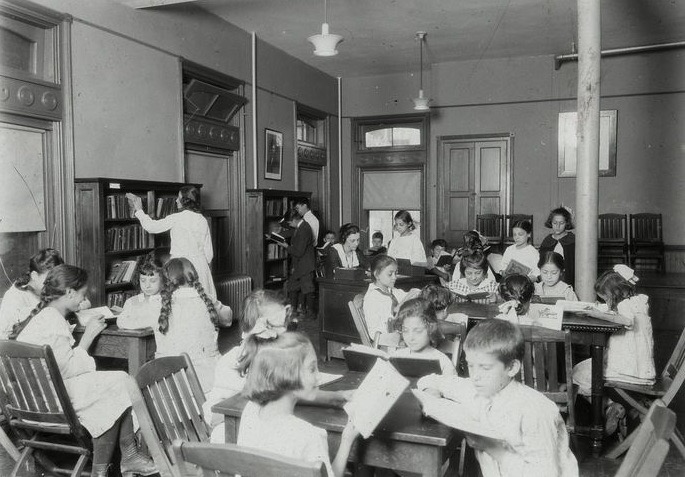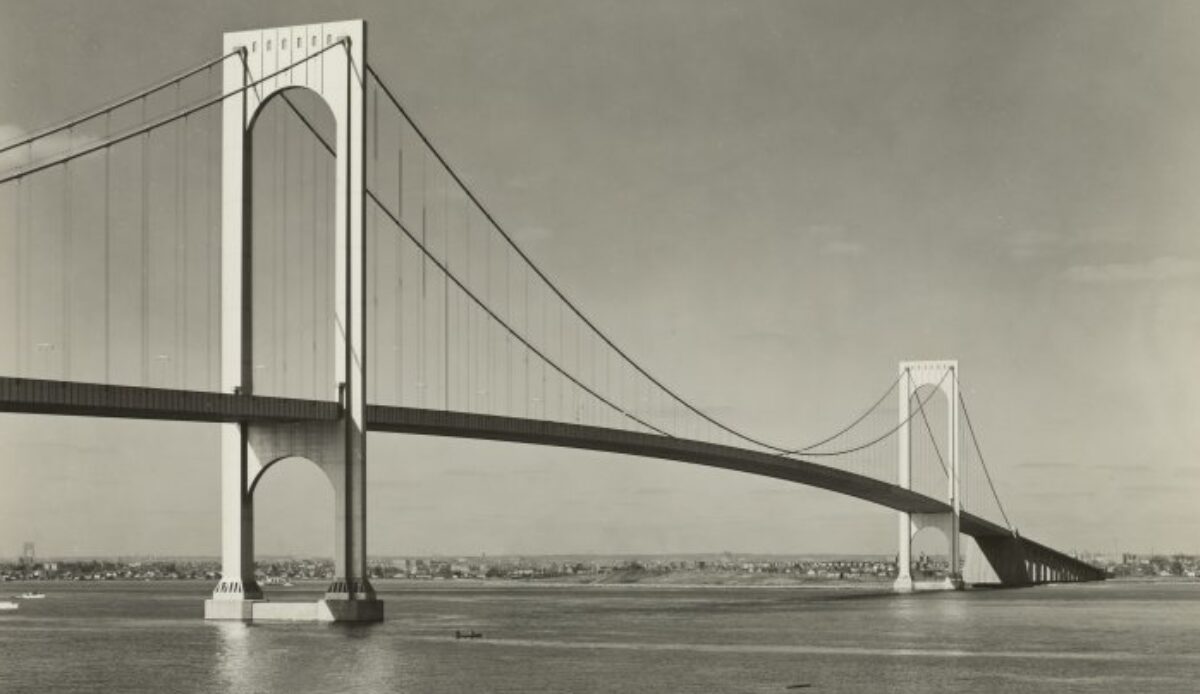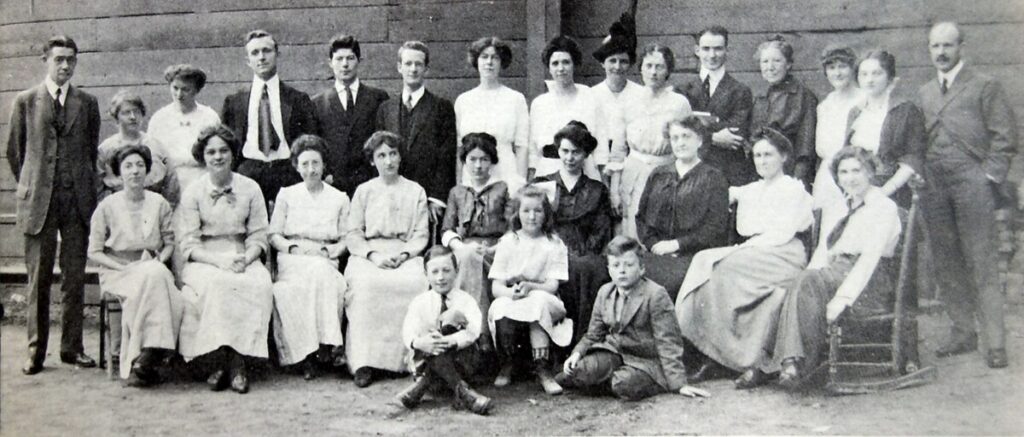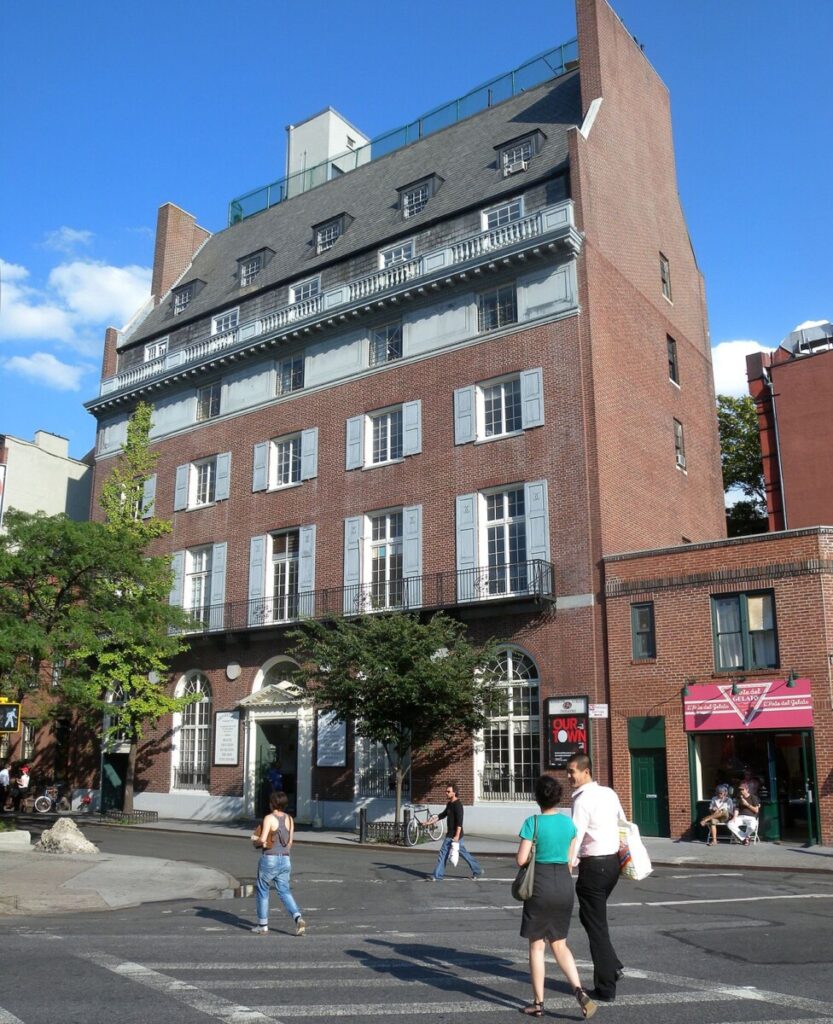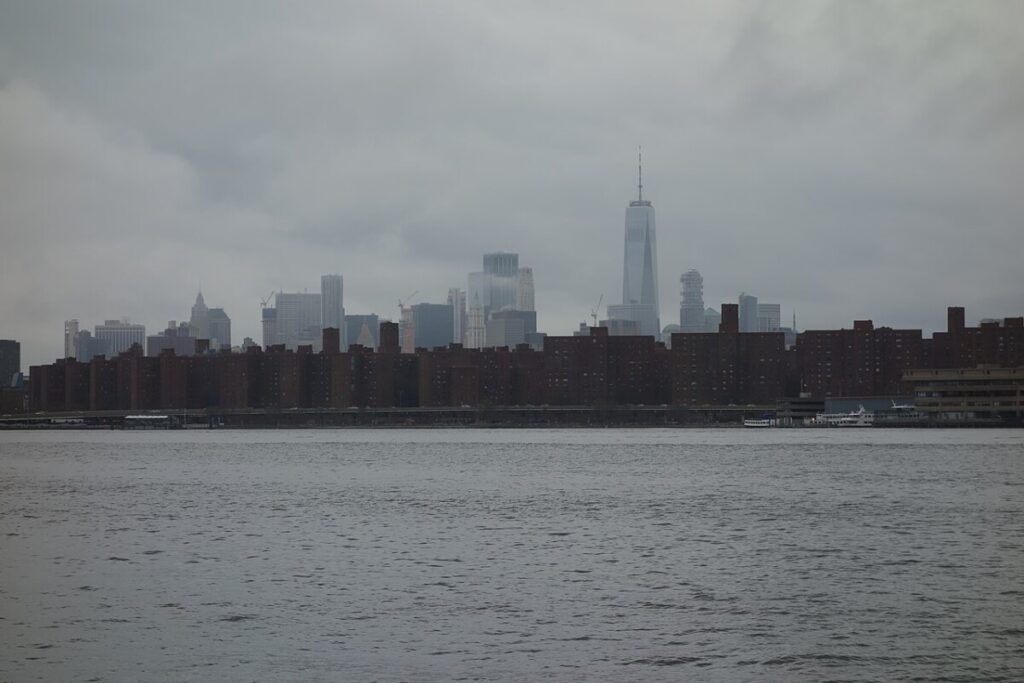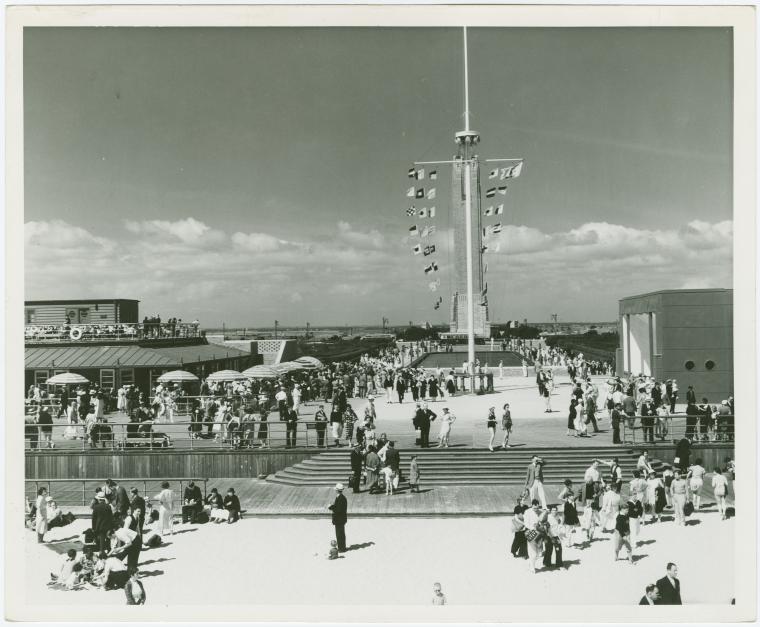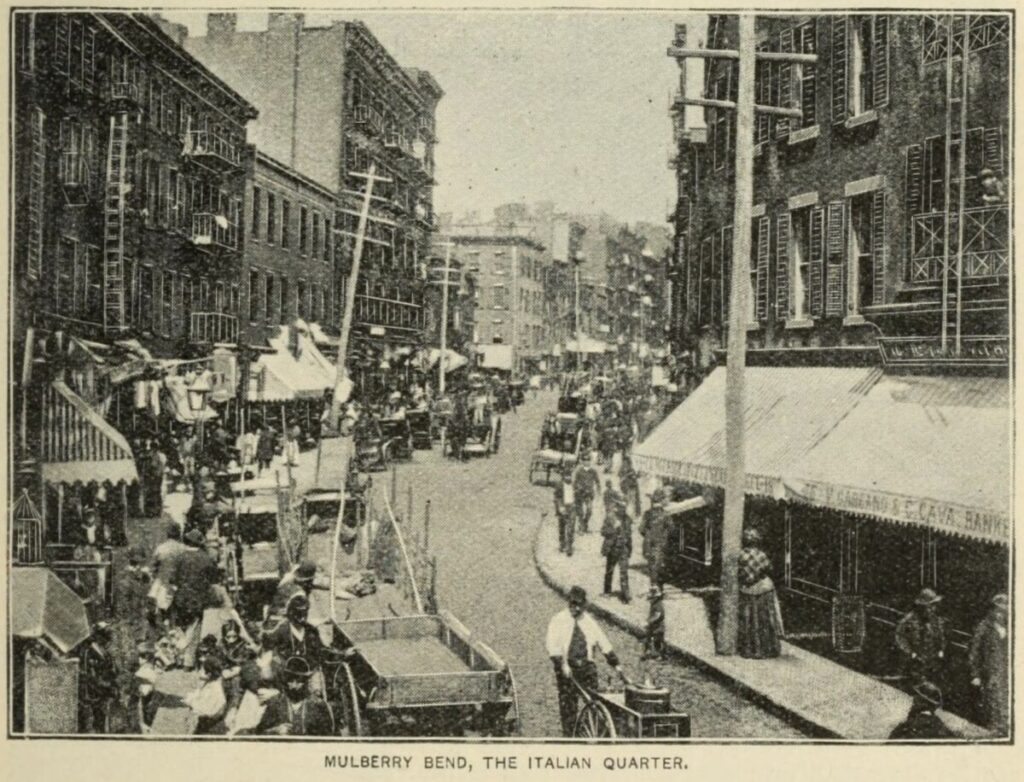
Good morning, everyone. Thanks for a good class yesterday afternoon. As we mentioned, here is Discussion Thread #2. We have discussed the power of the visual image a little bit in class. The images of Jacob Riis, among others, helped spur many of the reforms of the Progressive Era. Above we see a photograph taken of Mulberry Street in Little Italy around 1890. It was published in an illustrated history of New York City in 1892.
Among the reforms in the late nineteenth and early twentieth century was the so-called Settlement House Movement, about which we will talk more in class in the coming days. The photograph below was taken in the library of the Mulberry Settlement House in October 1920, almost exactly 100 years ago. For Discussion Thread #2 explain in 100-300 words what you see in the image. You have wide latitude and can answer however you like. Perhaps you might focus on the children as a group, one child in particular, one or more of the adults, the room, the furniture, the image itself as a piece of photojournalism, or how and what brought them all here. Or, you might write about something else entirely related to the image that you find striking or meaningful in some way. Focus on what you like and give a thoughtful response.
